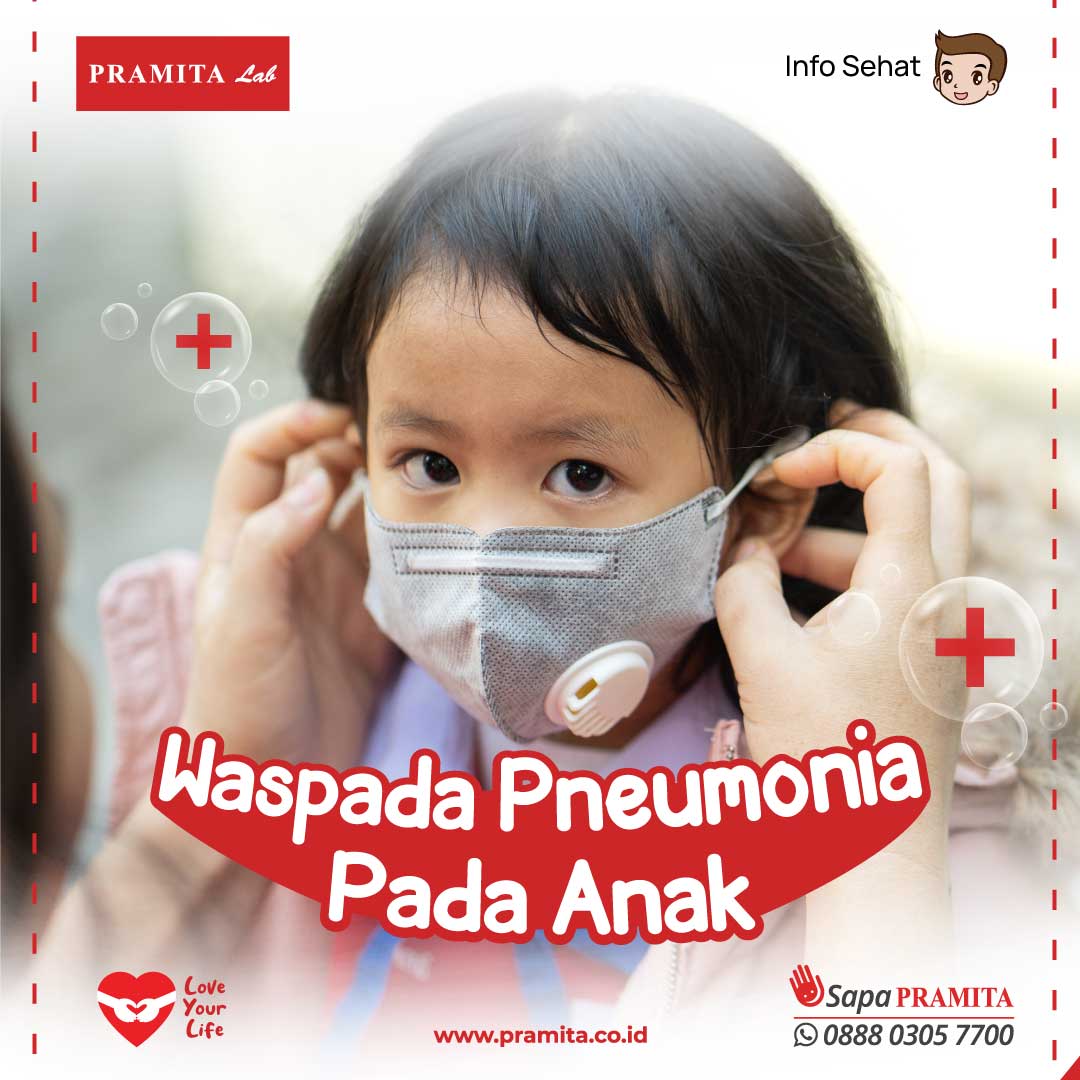Healthy Inspirations

Beware of Pneumonia in Children
Tue, 12 Dec 2023In November 2023, China reported a spike in respiratory diseases that were similar to the symptoms of pneumonia (lung inflammation) and attacked school-age children.
Initially this disease was called Mysterious Pneumonia (the cause is not yet known). However, according to the statement by the Director of the National Medical Center for Infectious Diseases in Shanghai, WHO and the Indonesian Ministry of Health, the cause of this new outbreak is Mycoplasma Pneumoniae (M. Pneumoniae).
M. Pneumoniae is a pathogen in the form of bacteria that attacks the respiratory tract and causes disease by damaging the lining of the respiratory system.
Transmission is through droplets (saliva splashes) when sufferers cough/sneeze and are inhaled by healthy people.
This case mostly attacks children. Because children's immunity is weaker and children have shorter airways, it is easier for infections that occur in the upper respiratory tract to enter the lung tissue.
Other risk factors that increase the occurrence of this disease are those who live in crowded areas, have low immunity and have recently recovered from respiratory infections.
The symptoms of the disease are not typical/atypical. Symptoms generally appear 1-4 weeks after infection
actions, namely sore throat, weakness/fatigue, fever, cough that slowly gets worse and lasts several weeks/months, headache, pleural effusion.
Symptoms in children aged < 5 years can be different, namely sneezing, blocked/runny nose, sore/hoarse throat, watery eyes, wheezing/sounding breath, vomiting, diarrhea.
Symptoms are more severe, namely fever, chills, shortness of breath.
Some cases of infection tend to be mild so treatment at home is sufficient, but some conditions require hospital treatment. Most recover without antibiotics, but some cases require antibiotics to help speed healing.
Even though it can be cured, we must not be careless, because complications can arise from severe pneumonia, asthma attacks, encephalitis (inflammation of the brain), hemolytic anemia, kidney dysfunction.
Examinations needed to detect M. pneumoniae include lung x-ray examination, hematology, PCR, Mycoplasma culture, antibody serology.
WHO recommends prevention by maintaining distance from sick people, staying at home when sick, undergoing examination/treatment, using masks, good air ventilation, washing hands.
To date, there have been no reports of deaths caused by M. Pneumoniae.
SOURCE:
• Jurnal Heliyon 9 (2023)
• Artikel WHO 23 november 2023 (disease outbreak News)
• Artikel Medical press 27 November 2023
• Artiken ECDC (European Centre for Disease and Control)--> communicable disease threats report
• WSWS org (World Socialist Web Site)
• BBC news Indonesia
• CDC org (Centers for disease Control and Prevention)
Author: Dr. Odilia Lustriana (PRAMITA Clinical Lab Medical Consultant, Branch Jl. M. Toha No. 163 Bandung)

